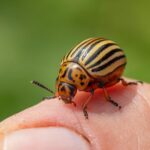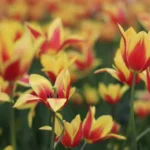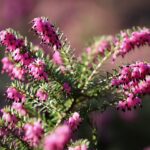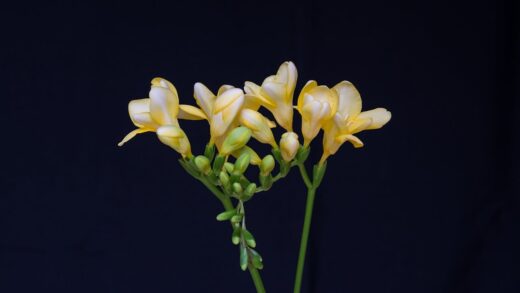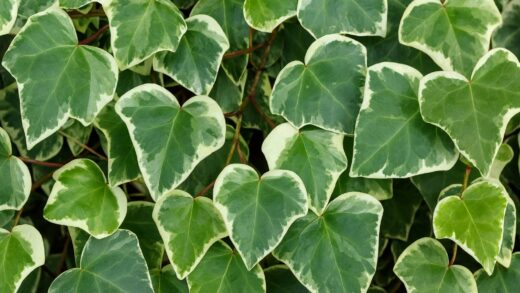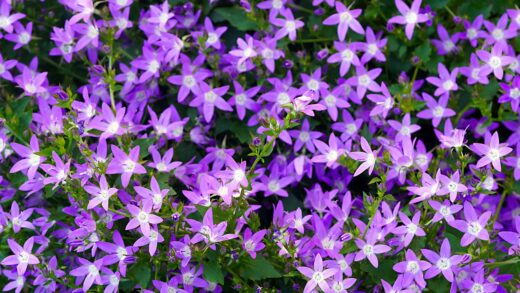While quince trees are generally considered to be robust and relatively low-maintenance, they are not immune to a range of diseases and pests that can impact their health, vigor, and the quality of their fruit. Proactive management and a keen eye for early symptoms are the cornerstones of keeping these potential problems in check. An integrated pest management (IPM) approach, which combines cultural, biological, and, only when necessary, chemical controls, is the most sustainable and effective strategy. By fostering a healthy growing environment and understanding the life cycles of common adversaries, growers can significantly minimize the damage caused by these issues and ensure a consistently productive tree.
The most significant threat to quince trees in many regions is a bacterial disease known as fire blight. This destructive disease can spread rapidly, particularly in warm, humid spring weather, causing blossoms and new shoots to appear scorched, as if burned by fire. Vigilance is paramount, as fire blight can quickly move into the main branches and trunk, potentially killing the entire tree. Management relies heavily on prevention, such as avoiding high-nitrogen fertilizers that promote susceptible, succulent growth, and on the swift removal and destruction of any infected plant parts.
Fungal diseases also pose a considerable challenge, with quince leaf blight being one of the most common culprits. This disease manifests as small spots on the leaves that enlarge over time, often leading to premature defoliation, which weakens the tree by reducing its photosynthetic capacity. The fungus can also infect the fruit, causing dark, rotten spots that make it unsuitable for use. Good sanitation practices, such as clearing away fallen leaves in the autumn to reduce overwintering fungal spores, are a critical first line of defense.
On the pest front, the codling moth is a major adversary for quince growers, just as it is for apple and pear producers. The larvae of this moth burrow into the developing fruit, tunneling to the core to feed on the seeds. This damage creates entry points for rot and makes the fruit unappealing and unusable. Monitoring for the adult moths using pheromone traps can help to time control measures precisely, such as the application of horticultural oil or other approved insecticides, to target the vulnerable egg or newly hatched larvae stage.
A holistic approach to disease and pest control begins with promoting excellent tree health. A well-sited, properly pruned, and appropriately watered and fertilized tree is inherently more resilient and better able to withstand pressure from diseases and pests. Enhancing biodiversity in the garden or orchard by planting companion plants that attract beneficial insects can also create a natural system of checks and balances, where predators like ladybugs and lacewings help to keep pest populations, such as aphids, under control.
More articles on this topic
Common fungal and bacterial diseases
Fire blight, caused by the bacterium Erwinia amylovora, stands as the most feared disease of quince trees. The infection typically enters the tree through its blossoms in the spring and is often spread by pollinating insects or splashing rain. The first signs are wilted, blackened blossoms and young shoots that develop a characteristic “shepherd’s crook” hook at their tips. The bacteria can travel systemically through the tree, causing large cankers on branches and the trunk, which ooze a watery, bacterial substance. There is no cure for fire blight, so management is entirely focused on prevention and aggressive pruning, cutting off infected branches at least 30 centimeters below any visible sign of infection into healthy wood.
Quince leaf blight, caused by the fungus Fabraea maculata, is another prevalent issue that affects both the foliage and the fruit. It begins as small, reddish-brown spots on the leaves in late spring or early summer. These spots gradually enlarge and merge, developing a dark, almost black center, and can lead to extensive yellowing and premature leaf drop by mid-summer. On the fruit, the fungus causes black, slightly sunken spots that can render the fruit inedible. Control involves thorough sanitation, such as removing all fallen leaves and fruit in the autumn, and applying preventative fungicide sprays starting from petal fall in the spring, especially during wet seasons.
Brown rot, caused by the Monilinia fungus, is a destructive disease that primarily affects the fruit, especially as it approaches maturity. The infection often starts at a point of injury, such as an insect bite or hail damage, and appears as a small, circular brown spot that expands rapidly. In humid conditions, the rotting area will develop characteristic concentric rings of fuzzy, tan-colored spores. Infected fruit will eventually become mummified, either dropping to the ground or remaining attached to the tree, where they serve as a source of infection for the following year. Diligent removal of these mummified fruits during winter pruning is a crucial step in managing this disease.
Powdery mildew is a fungal disease that appears as a white, powdery coating on the leaves and young shoots of the quince tree. While it is generally less damaging than the previously mentioned diseases, a severe infection can hinder photosynthesis, stunt the growth of new shoots, and may cause some distortion of the leaves. Powdery mildew thrives in conditions of high humidity, particularly when days are warm and nights are cool. Ensuring good air circulation through proper pruning can significantly reduce its incidence. If necessary, applications of horticultural oil or sulfur-based fungicides can be effective in controlling its spread.
More articles on this topic
Key insect pests of quince
The codling moth (Cydia pomonella) is without a doubt one of the most significant insect pests that attack quince fruit. The adult moth lays its eggs on or near the developing fruit, and upon hatching, the small larva immediately begins to burrow its way towards the core. The larva’s feeding activity inside the fruit creates tunnels and leaves behind frass (excrement), making the fruit inedible. The entry hole is often small and difficult to detect initially, but a small amount of frass may be visible. Management strategies often involve using pheromone traps to monitor adult moth populations and time insecticide applications to target the vulnerable larvae before they enter the fruit.
Aphids are common sap-sucking insects that can infest the new, tender growth of quince trees in the spring. They feed by piercing the plant tissue and extracting the nutrient-rich sap, which can cause the leaves to curl, yellow, and become distorted. As they feed, aphids excrete a sticky substance called honeydew, which can coat the leaves and fruit. This honeydew then often supports the growth of a black, sooty mold, which, while not directly harming the tree, can block sunlight and reduce photosynthesis. Encouraging natural predators like ladybugs, lacewings, and parasitic wasps is a key biological control strategy for keeping aphid populations in check.
The pear slug, which is not a true slug but the larval stage of a sawfly, can also be a pest of quince. These small, slimy, dark-colored larvae feed on the upper surface of the leaves, skeletonizing them by eating the green tissue and leaving behind the network of veins. While a small infestation is usually just a cosmetic issue, a heavy outbreak can cause significant defoliation, which can stress the tree, especially if it occurs early in the season. Fortunately, they are relatively easy to control and can often be dislodged with a strong jet of water from a hose or treated with insecticidal soap.
Scale insects are another type of sap-feeding pest that can affect quince trees. These insects attach themselves to the bark of twigs, branches, and sometimes the fruit, covering themselves with a hard, waxy, shell-like coating for protection. They remain stationary for most of their lives, slowly draining the tree of its energy. A heavy infestation can cause dieback of twigs and branches and a general decline in the tree’s vigor. Dormant oil sprays applied in the late winter or early spring before the buds break are a very effective method for controlling scale insects by suffocating the overwintering pests.
Integrated pest management (IPM) strategies
Integrated Pest Management (IPM) is a holistic and environmentally sensitive approach to managing pests and diseases that prioritizes long-term prevention. The foundation of any good IPM program for quince is cultural control, which involves creating a growing environment that is favorable to the tree and unfavorable to its pests. This includes practices such as selecting disease-resistant varieties when possible, ensuring proper planting site selection with good air circulation, and maintaining optimal tree health through appropriate watering, fertilization, and pruning to build its natural defenses.
A critical component of cultural control is sanitation. This involves the diligent removal of potential sources of infection and pest overwintering sites. For quince, this means promptly pruning out and destroying any wood infected with fire blight, meticulously cleaning up and disposing of all fallen leaves and fruit in the autumn to reduce fungal spores from diseases like leaf blight and brown rot, and removing mummified fruit that may be clinging to the branches during winter pruning. These simple housekeeping tasks can dramatically reduce the pest and disease pressure in the following season.
Biological control is another key pillar of IPM, focusing on the use of natural enemies to manage pest populations. This can be achieved by fostering a habitat that is attractive to beneficial insects. Planting a variety of flowering plants near the quince tree can provide nectar and pollen for predators like ladybugs, lacewings, and hoverflies, which are voracious predators of aphids. Avoiding the use of broad-spectrum insecticides is crucial, as these chemicals will kill these beneficial insects just as effectively as the pests, disrupting the natural balance of the ecosystem.
The use of chemical controls, such as fungicides and insecticides, is considered a last resort within an IPM framework, to be used only when monitoring indicates that pest or disease populations are reaching a level that could cause significant economic or aesthetic damage. When chemical intervention is deemed necessary, the goal is to choose the least toxic, most targeted option available. For example, using dormant oil sprays to control overwintering insects, or applying specific, targeted pesticides based on pest monitoring data, is preferable to calendar-based, broad-spectrum spraying, which can have negative impacts on the wider environment.
Preventative measures and monitoring
The most effective way to manage diseases and pests in quince is to prevent them from becoming established in the first place. This begins with giving the tree a strong, healthy start in life. Planting the tree in a location with full sun and well-drained soil is fundamental, as stressed trees are always more susceptible to attack. Furthermore, proper pruning is a powerful preventative tool; by thinning the canopy to improve air circulation and sunlight penetration, you create an environment where the leaves dry more quickly, making it much more difficult for fungal diseases to take hold.
Regular monitoring is the engine that drives a successful IPM program. This means taking the time to walk through the orchard or garden and inspect the quince tree closely on a regular basis, at least once a week during the growing season. Look for the earliest signs of trouble: discolored or spotted leaves, wilting shoots, insect feeding damage, or the presence of the insects themselves. Early detection allows for a much more effective and less intensive response. For example, removing a single branch showing the first signs of fire blight is far easier and more effective than dealing with a widespread infection later on.
The use of monitoring tools can greatly enhance the effectiveness of this surveillance. Pheromone traps for insects like the codling moth are an invaluable tool. These traps use a synthetic version of the female moth’s mating scent to attract and capture male moths. By checking these traps regularly, a grower can accurately determine when the adult moths are flying and laying eggs, which allows for the precise timing of any necessary control measures to target the most vulnerable stage of the pest’s life cycle, increasing effectiveness while minimizing pesticide use.
Keeping a record of observations from year to year can also be extremely beneficial. By noting when certain diseases or pests tend to appear, and under what weather conditions, a grower can anticipate future problems and take preemptive action. For example, if quince leaf blight was a problem during a particularly wet spring one year, the grower can be prepared to apply preventative fungicide sprays during similar weather patterns in subsequent years. This historical knowledge allows for a proactive rather than a reactive approach to tree health management.







